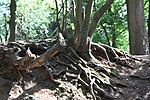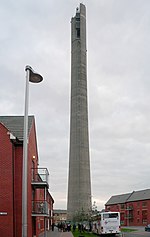West Hunsbury
West Hunsbury is a housing estate in the south of Northampton, England, situated around 2 miles (3 km) away from the town centre, and 0.5 miles (1 km) away from the M1 via junction 15A. It is part of the Hunsbury residential area, which also constitutes East Hunsbury east of Towcester Road. Shelfleys is an earlier name for the area and still appears on signs, maps and bus destination indicators. However Hunsbury is an old name. Iron ore was formerly quarried in the area. This had begun by 1873 and an ironworks called Hunsbury Ironworks was in the course of being built in that year. The quarries were worked by several companies and individual owners, two of which companies used the name "Hunsbury" in their titles. The area is part of the Borough of Northampton. The area was developed in the 1970s, 1980s, 1990s and 2000s as part of the expansion of Northampton.
Excerpt from the Wikipedia article West Hunsbury (License: CC BY-SA 3.0, Authors).West Hunsbury
Hunsbury Close,
Geographical coordinates (GPS) Address Nearby Places Show on map
Geographical coordinates (GPS)
| Latitude | Longitude |
|---|---|
| N 52.217 ° | E -0.924 ° |
Address
Hunsbury Close
Hunsbury Close
NN4 9UE , Hunsbury Hill
England, United Kingdom
Open on Google Maps









